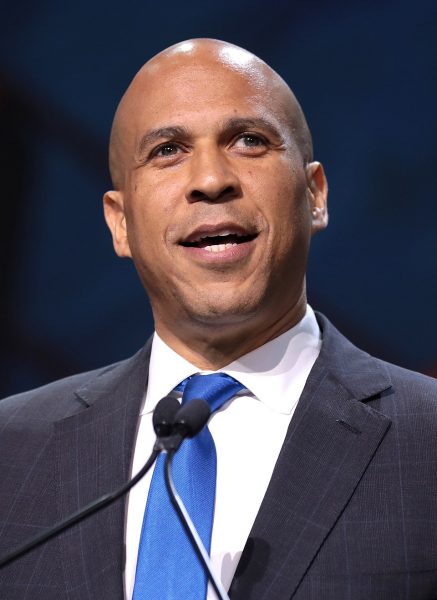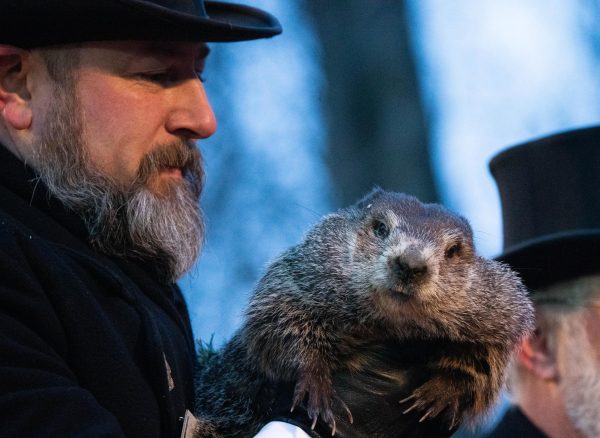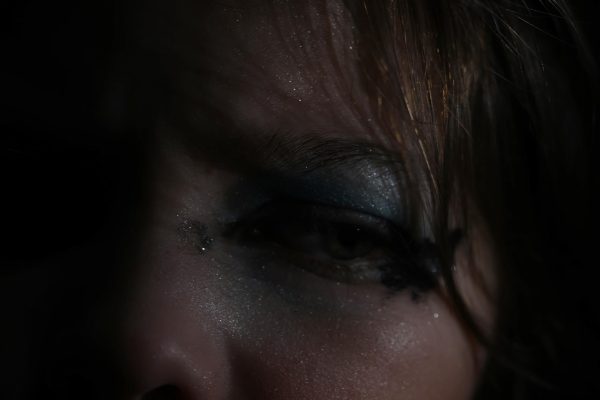Momo Challenge Redirects Blame from the Internet to the Parents
It’s less of a “Real or Myth” kind of controversy.
The Momo Challenge, even with all of the contradictory evidence surrounding the debate over whether it is valid or a hoax, should reiterate the question of how protective parents should be throughout the various ages of their children’s upbringing more than how much the recent conflict ensuing among perturbed parents can be attributed to the challenge.
Yet another internet phenomenon, this one being fatally targeted towards kids, has been dominating global discussion as of recent, with there being no official evidence to link suicides being stemmed from the challenge. The lack of substantial evidence classifies this phenomenon, known as the “Momo challenge,” as a hoax, even despite that reports of experiences with the chicken-legged figure both locally and globally and warnings proliferating soon after have proven that these deaths could not have been mindlessly assigned to a challenge pioneered by the figure. Regardless of the validity of the challenge, the attention the alleged challenge has spurred, has led to an increased blame towards the influences of the internet by parents when it’s quite possibly their lack of involvement in their children’s technological activities that allow children to be victimized by internet predators.
The Momo challenge has been claimed to feature the image of the statue of “Mother Bird,” which was created by artist Keisuke Aisawa for the special effects company Link Factory, popping up as “Momo” alongside messages on WhatsApp or in Peppa Pig, Kids YouTube or Fortnite videos posted to YouTube, instructing kids to commit violent acts that may culminate into suicide. The revelation of personal information is also believed to be demanded by the hackers responsible for assuming the role of Momo. It is believed that what prompts these adolescents to submit to Momo’s demands is the leakage of personal information or the infliction of an “evil spell” if they don’t.
The challenge is comparable to the Blue Whale Challenge, which, having reached its speculation in 2017, was claimed to be a prolonged online game that demanded the players to commit suicide on the 50th day, in which claims that the deaths in the U.S., Russia, Brazil and more resulted from that challenge were eventually disproven. Nonetheless, the failure of authorities to completely disprove a connection between deaths in South America in 2018 being correlated to the Momo challenge as well as discrepancies amongst platforms claimed to accent the challenge have allowed for the possibility of Momo popping up in social media and messaging networks as well as the negative influences the Internet continuously proves itself to have on children to be increasingly dwelled on topics recently.
Although images of the statue first appeared on Instagram in 2016, they didn’t become the craze of social media until July of 2018, the month in which a sixteen-year-old boy in Columbia had engaged in chats on WhatsApp with a twelve-year-old girl in Argentina before killing himself. Police have confirmed that their messages link them to the “Momo Suicide Challenge,” in which the boy sent the girl the game before she too killed herself; however, evidence of the messages occurring between the two and thus proving a link to the Momo challenge had not been preserved by the authorities, most likely involuntarily as the unreliability of technology in itself often prevents such tasks from being executed. If WhatsApp had been in correspondence with the authorities, however, the messages could have been forcibly deleted by the messaging company to avoid the development of a bad reputation towards their company in light of the conflict that has been created because of the challenge. Furthering belief that their suicides were linked to the challenge, the girl recorded her activities before hanging herself, leading the police to believe that the girl’s “intention was to upload the video to social media as part of a challenge aimed at crediting the Momo game,” as videographic evidence was requested by Momo. Warnings of the challenge took precedence in other regions of South America when authorities in Mexico claimed that the challenge was started in a FaceBook group, in which children communicating with unknown numbers are then invited to message Momo on WhatsApp, with a refusal to respond resulting in them being cursed.
Despite the fact that WhatsApp tried to advise its users to simply block any threatening phone numbers and report any problematic messages, warnings of the challenge were accentuated in the United Kingdom in the beginning of 2019 as parents discovered Momo being not only predatory on the WhatsApp messaging app but in YouTube videos intended to entertain children. The Police Service of Northern Ireland implied that parents needed to do a better job at educating their children to avoid them feeling pressured to provide information to the hackers masked by Momo, as well as schools across the U.K. warning parents of the dangers currently residing in some social media outlets and to be cautious with what their children are watching. Discussion of the challenge in Europe then alluded to the United States becoming very concerned with the so-called hoax. Kim Kardashian asked her 129 million Instagram followers to pressure YouTube into taking down the videos, while local and national news channels attempted to prevent the bulging-eyed woman from claiming the lives of any more people.
However, all of the global discussion of the topic and warnings issued by various sources failed to be an indication that the challenge is an existent conflict merely because no screenshots of threatening messages derived from Momo or videos promoting violence surfaced, even when police authorities had confirmed the link between the suicides of two adolescents in South America to the game engineered by Momo and believed the girl’s pre-suicide video to be a requirement of Momo.
“It could possibly be because it’s connected to an electronic device; therefore, the messages could disappear which wouldn’t leave any evidence to prove their deaths were caused from Momo,” said sophomore Olivia Jagielo in regards to the lack of definitive evidence to link the suicides to the challenge. The influx of warnings proclaimed in Mexico and the United Kingdom alongside parents claiming that their children had experienced the hijacking of their Internet activities by Momo could not be a coincidence.
An announcement by Youtube on Feb. 27, 2019 proved to further debunk the challenge by stating, “We want to clear something up regarding the Momo Challenge: We’ve seen no recent evidence of videos promoting the Momo Challenge on YouTube. Videos encouraging harmful and dangerous challenges are against our policies.” Local citizen Kat Poole recognizes that the massive amount of videos posted to YouTube everyday make disturbing content appearing in even G-rated videos a possibility. “I’m no I.T. person, but I don’t know what algorithm you can write to be able to read the internals of a video that was posted. I don’t know how they can effectively say that 100%, this [the Momo challenge being present in videos on YouTube] is not the case,” said Poole.
YouTube has been notorious for some of its videos on children’s channels facading themselves to be clean videos intended for children in their thumbnails and then featuring very mature, sometimes gory, content, oftentimes with a modified version of the character, once the video is played. This has occurred among videos featuring characters from Peppa Pig, Frozen, the Minions franchise, Doc McStuffins Thomas the Tank Engine and many more. There are some less misleading videos placed on children’s channels in which a child still wouldn’t have the capability to recognize that the video was intended for an adult to watch. And then there are some partially deceptive children’s channels in which the landing page appears to be conducive to children, while the titles of its videos are things like “BLOODY ELSA: Frozen Elsa’s Arm is Broken by Spiderman,” being just convincing enough so that the parent ensures the content their child is watching is appropriate before walking away while their child is being exposed to graphic and violent images to their complete unawareness.
After the prevalence of this content had been address with YouTube, the company emphasized how accessible it is to flag videos, which would then be reviewed by YouTube staffers to possibly be taken down, and for parents to download the YouTube Kids app and turn on “restricted mode,” which would limit flagged content but not filter it out completely. This indicates that many inappropriate videos are not only not guaranteed to be eliminated on the YouTube app as a whole but even on channels specifically centered around children, most likely due to the inability of staffers to review such a large amount of flagged content within a short time period. Therefore, videos featuring the Momo challenge could have been overlooked amongst the many other flagged videos, leading the company to believe that no such challenge exists on its platform, while some of this flagged content survives the restricted mode’s attempt to filter it out. The existence of a lot of disturbing content before it was removed by YouTube in itself shows that a lot of intolerant activity ensues to the company’s complete unawareness. Believed by Poole, there is a possibility that YouTube has found evidence of the challenge, yet is claiming the contrary to avoid being affiliated with something that has exacerbated the animosity towards the influences of the Internet by people all around the world but especially amongst parents. And with revelations towards other inappropriate content embedded in supposed children’s channels in 2017, the company could not afford confirmations that hackers within their own network have caused suicides, exposure of unsuitable content to children and the overall mass panic of potential dangers towards children by people residing in multiple continents around the world.
Poole’s experience scrolling through Facebook comments and comments to local news channels promoting the question “Is it a hoax?” to further the spread of the phenomenon has indicated that the answer to that question could not possibly be yes. These comments have included parents claiming that when they showed their kids images of Momo, their kids recognized the figure as if they themselves had been subjected to the unexpected pop-up of her while watching what was supposed to be a kid-friendly YouTube program. Even Poole’s own friend posted a thread regarding the challenge, in which many people relayed that their children too were familiar with the visage of Momo. Also, the figure of Momo could not have been assigned to the suicides in South America as a false explanation for their deaths rather than naturally occurring as the signature image of the challenge because many people would argue that the human-chicken hybrid is more repulsing than scary. If people were going to fabricate the logistics of a challenge, they would more reasonably choose a figure much more definitively scary, one that would convince kids that it could inflict a curse upon them and therefore motivate them to complete the tasks desired by it. Although many kids above infancy would view the figure as alarming, kids ages one through five are susceptible to viewing a character they are not accustomed to as either scary or repellent in that they would prefer their traditional cartoon characters over an unfamiliar and strange-looking creature. Some children may even view it as cool due to its variety of features. Poole’s daughter, for example, is believed by Poole to be equally as likely to think the figure is cool or be so repulsed by it that she runs to her mother begging for the cartoon to be switched back to her favorite, Mickey Mouse.
Aside from the extent to which the challenge has been truly recurrent around the world rather than merely freaked out about by parents facing the hypothetical possibility of Momo appearing in their child’s cartoons, the challenge, already widely believed to be true, has created more of a debate on how much control parents should have on their children’s activities. For children of a very young age, such as one through five, children should not be able to utilize technology, but especially YouTube where content not suited for their age popping up is a constant possibility, in the absence of their parents. A parent should, at the very least, always be on standby monitoring whatever questionable content may appear while their child is using a technology device. By being so cautious, parents would be able to prevent their child conforming to the demands of Internet predators like Momo by interfering and turning off the program, although at a young age many children wouldn’t be able to comprehend the tasks being requested by Momo. At an older age, however, preferably starting around Kindergarten, children should be educated about these kinds of online risks and how to combat the situation if they were ever involved in something similar. Control should only be allocated to the hands of children more so when they are at the appropriate age to be exposed to such content, but exposure to these kinds of dangers at a younger age would likely invoke a fear not able to be handled with such an underdeveloped mind. Therefore, parents need to assume a more protective role, not to be confused with overprotection, when their children are very young to obviate any exposure to information they aren’t prepared for and any attempts to respond to a conflict they aren’t ready for. Due to her preexisting awareness that children should be monitored on technology rather than given the independence to do as they please on their own, Poole has ensured that she has prevented her four-year-old daughter from being harmed in any way by the influence of Momo by limiting her time on her tablet, being attentive when she is listening to YouTube videos, in which if any video pops up other than her usual cartoons then she will redirect the video back to an appropriate one, and requires most of the activities done on the tablet to be learning-based, not letting her engage in anything on the Internet other than YouTube. “I would like to think I wouldn’t let it happen in the first place. That could be naive of me, I realize that, because a lot happens that you don’t realize as a parent, but I hope to be engaged enough that I would be able to curve something like that because I don’t let her just go away. And partially it’s because of her age; she’s four,” said Poole.
Obviously with there being no way to predict Momo popping up in any video as it is completely random, her presence cannot be prevented 100% even on Kids Youtube, but any sort of deference by the child to the figure could be dodged by the interference of a parent. However, when her daughter is older, Poole plans on exposing her to threats like Momo by commanding her to bring her tablet to her in the event that she is targeted by any such threats. As Poole views sheltering children as an unrealistic approach to raising them, educating her daughter about how to approach situations like those will be a definite occurrence in a couple of years. Jagielo, being the age that she is, has undergone enough lectures by parents and teachers about how to avoid being involved in social media conflicts and how to combat them if prevention is not an option. She has been taught to approach every person, especially strangers, with a conscious outlook, not revealing any personal information, and reporting any harassments that she may face. Although her parents ensure that she is posting only appropriate content on her social media, she is guaranteed the privacy that any sixteen-year-old should be. Because of her age and thus the education she has endured regarding matters like the Momo challenge, her parents would be a lot more justified in being concerned about instances in which the Internet is influencing her beyond her usual efforts to subdue the problem. They wouldn’t need to be as involved in her Internet activities because she is responsible enough to deal with most of the dangerous situations that may arise on her own, so they could place blame on an online entity detrimental enough that even someone with her knowledge wouldn’t be able to combat. Parents of younger kids, on the other hand, shouldn’t be justified in blaming solely the Internet for causing harm to their kids because they should have been involved enough to prevent their gullible kid from engaging in any suspicious activity that could lead to dangerous acts. Nonetheless, many parents across the planet have become increasingly anxious for the sake of their own children because of the experiences parents’ kids locally and globally have claimed to have had with Momo and the suicides that have been confirmed by police authorities to have been the ultimate goal of the hackers communicating as Momo through social media and messaging networks. But fear shouldn’t be necessary if they’re acting as protective as their child’s age requires and have educated them properly about the situation, assuming that their age would be compatible with such exposure. As long as they’ve taken the necessary precautions best suited for their age group, these efforts would prevent any imminent danger to their children; the worst possible thing that could result from this approach, in the instance of Momo popping up in front of a younger child, would be seeing the agreeably unpleasant sight of a figure whose humans have hidden behind her digital exterior to cause even more of an inconvenience amongst the lives they have claimed in addition to the well-beings of those aiming to protect adolescents around the world. “Hopefully for some, it [the spread of the alleged Momo challenge] brought to light how you should be active in knowing what your child is doing and just being proactive for your approach in parenting instead of letting YouTube and tablets parent for you. You have to be a little more engaged in it,” said Poole.










